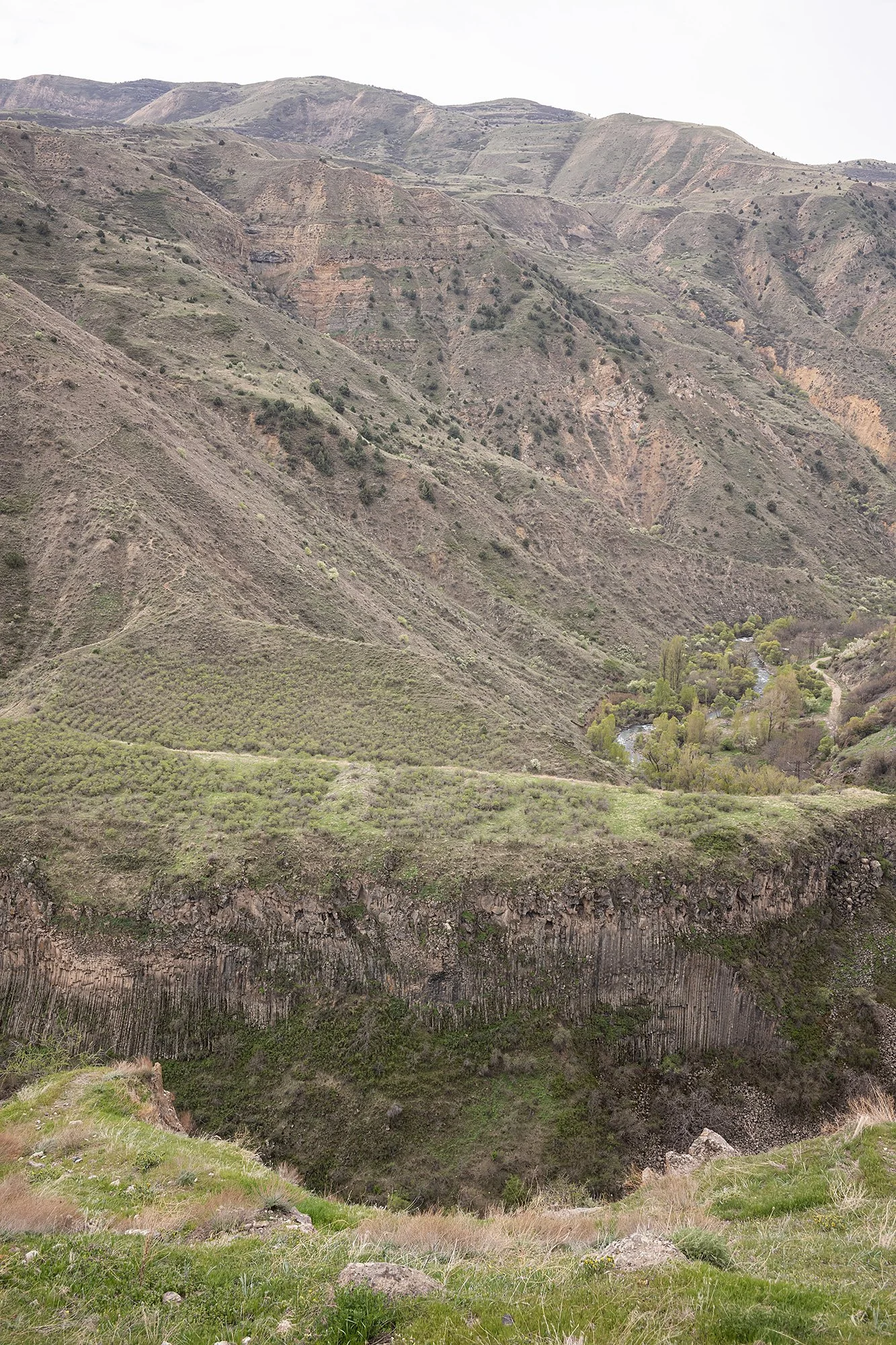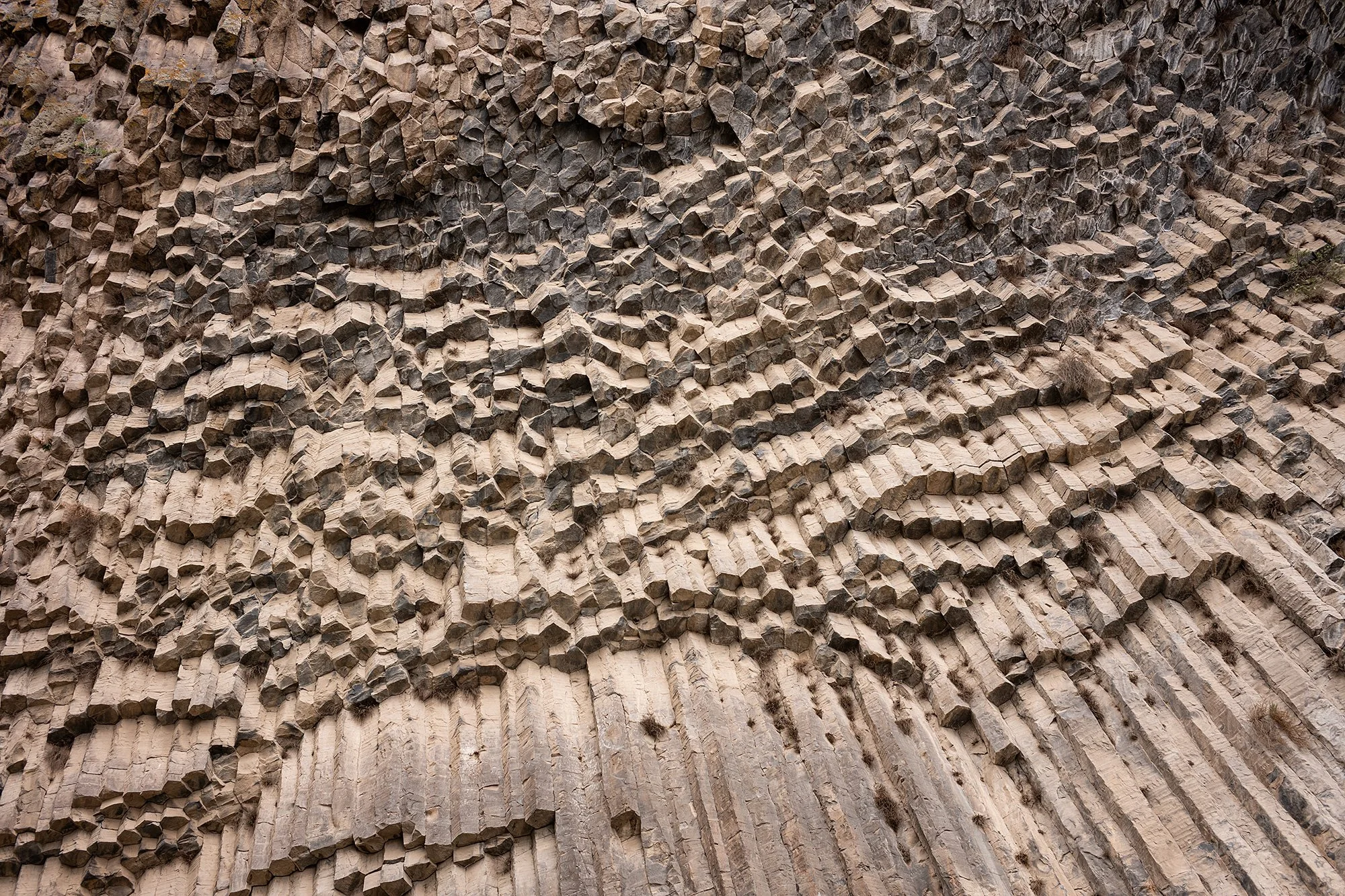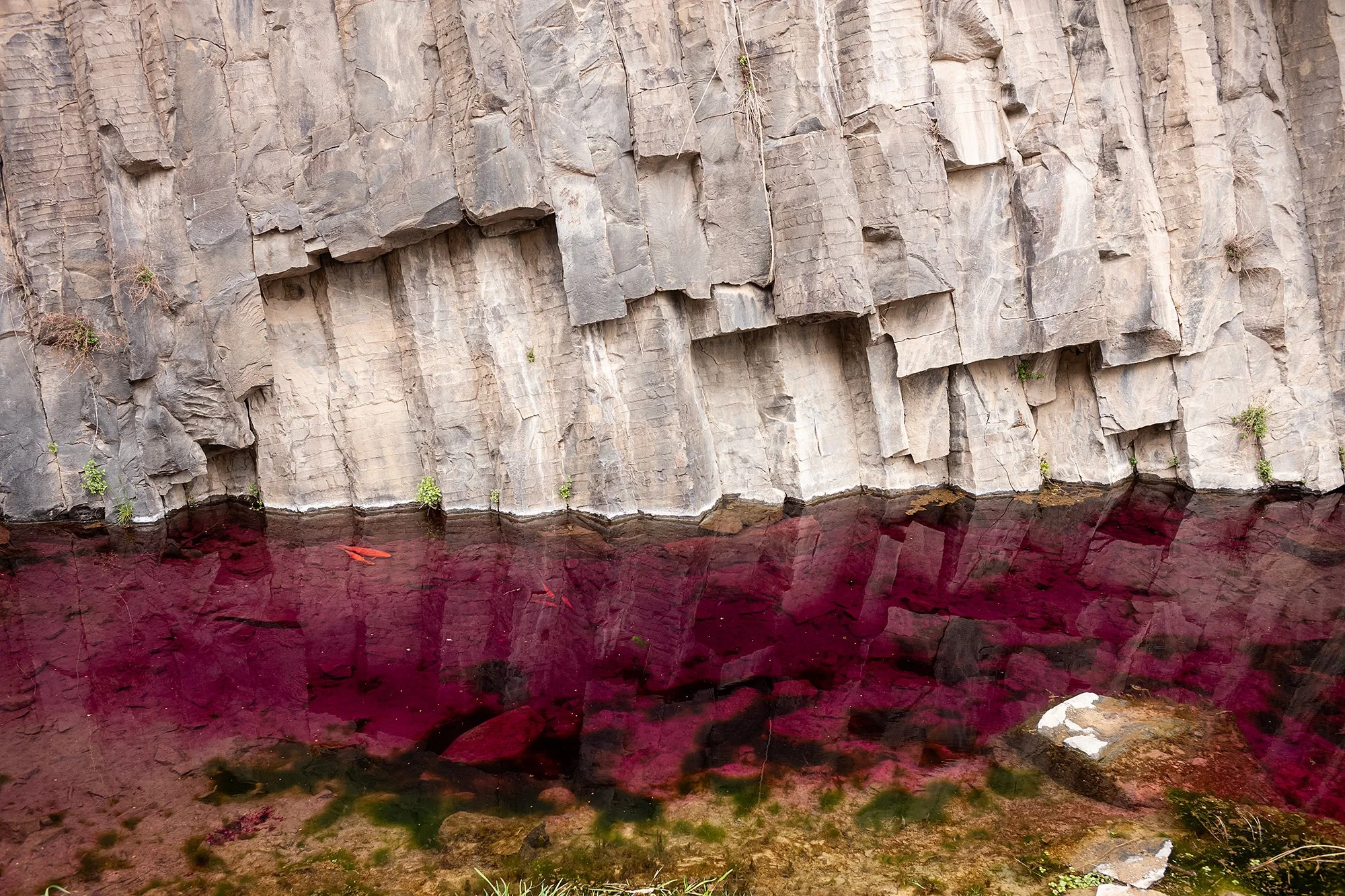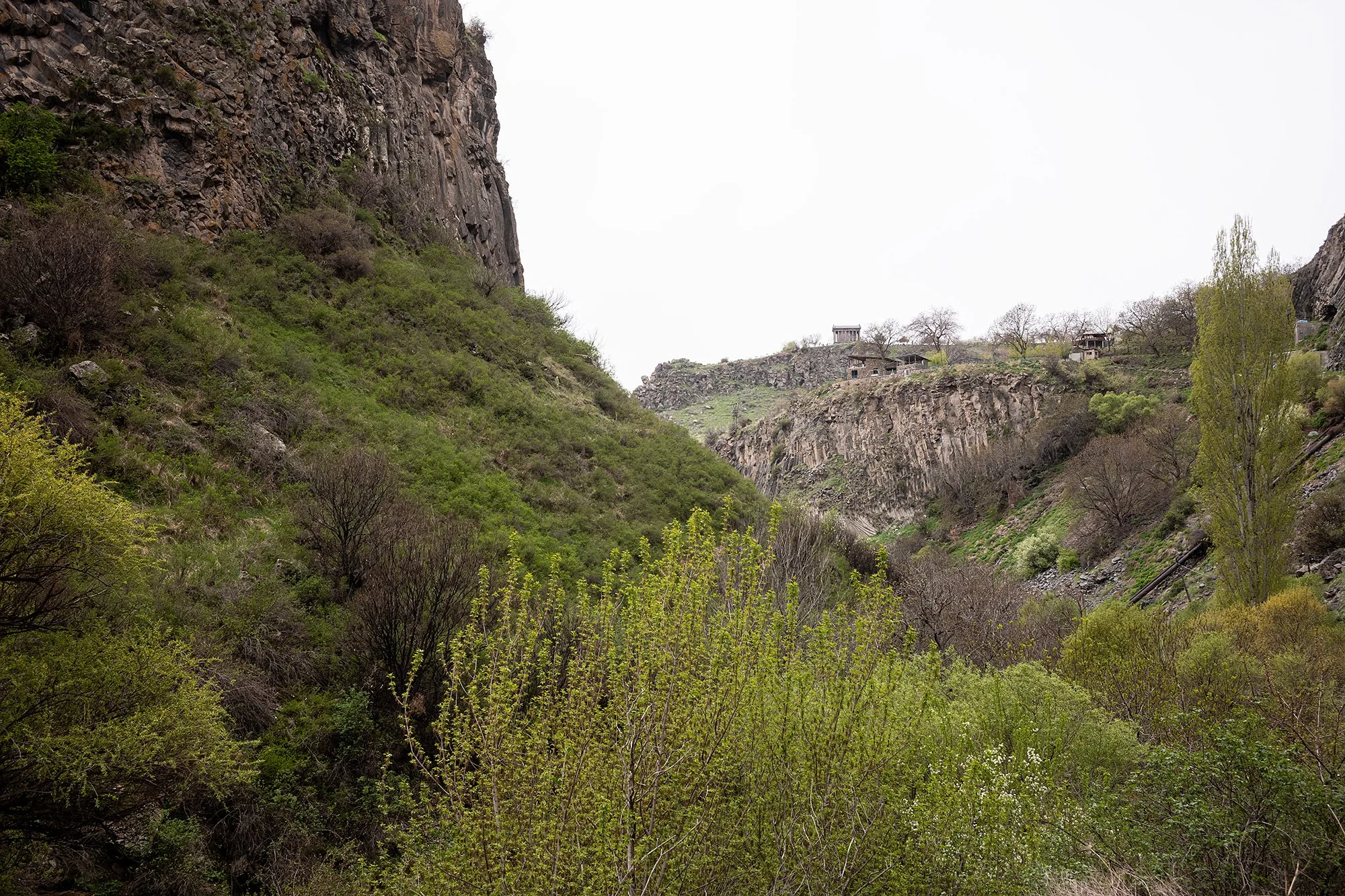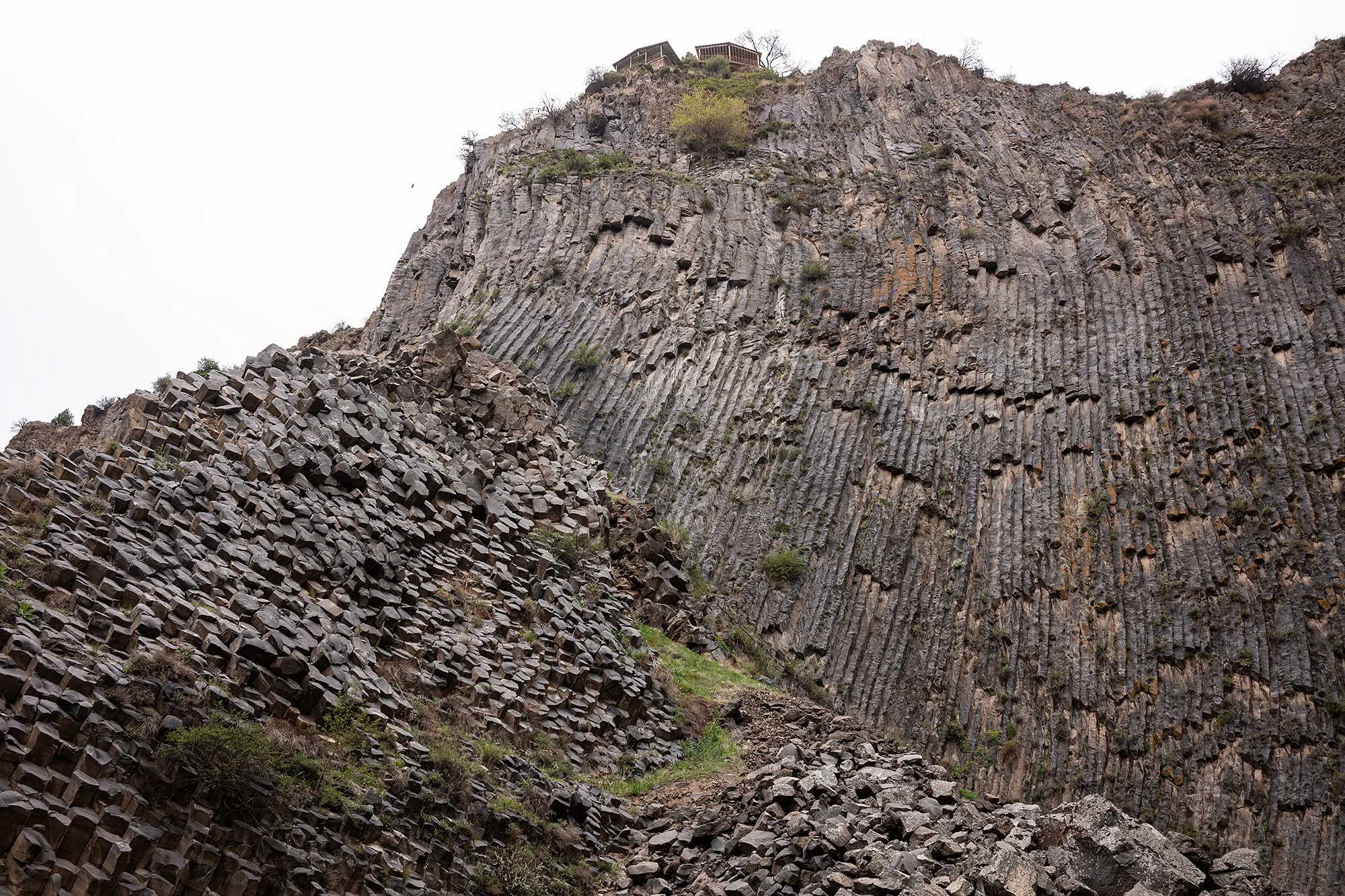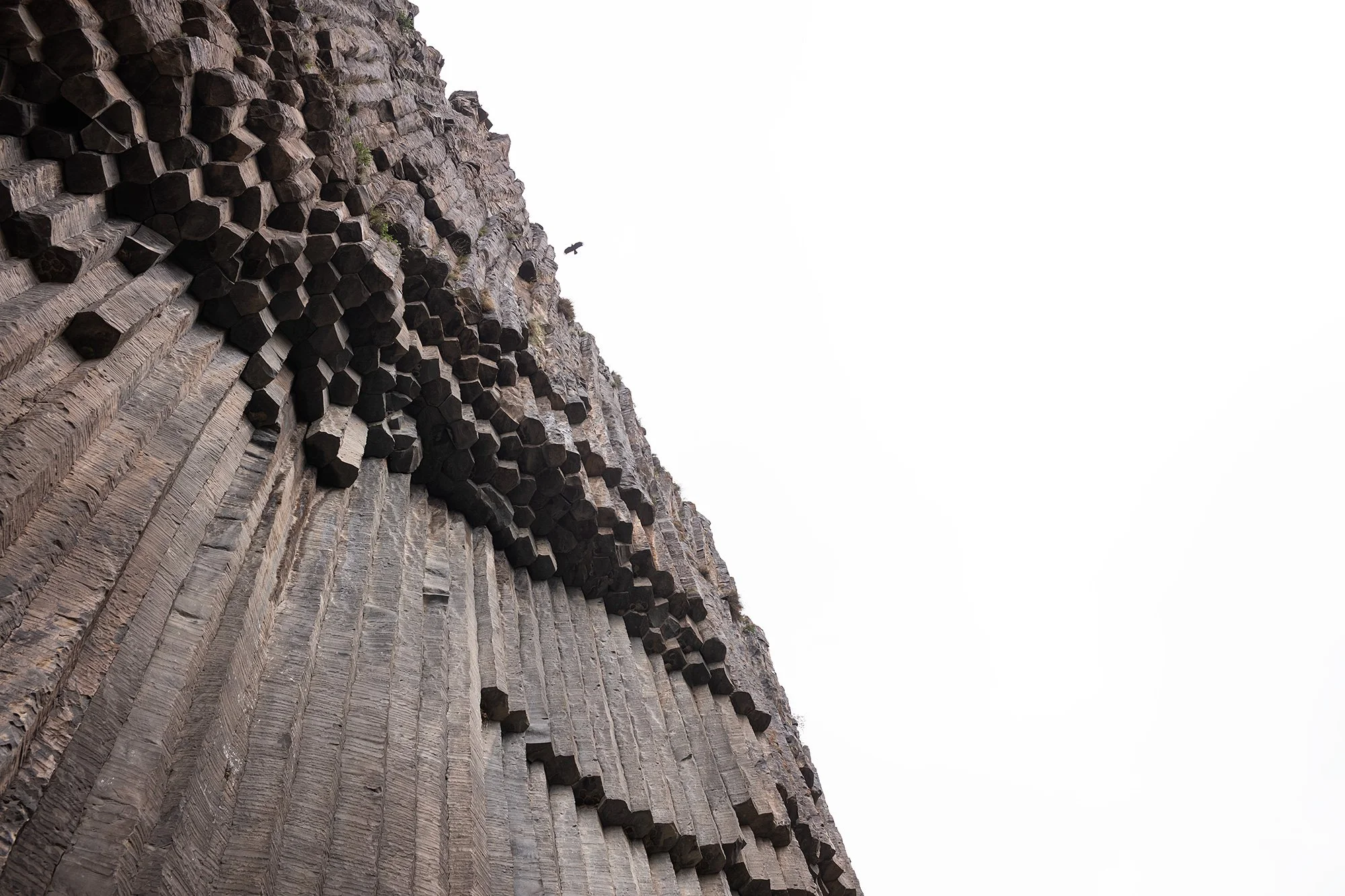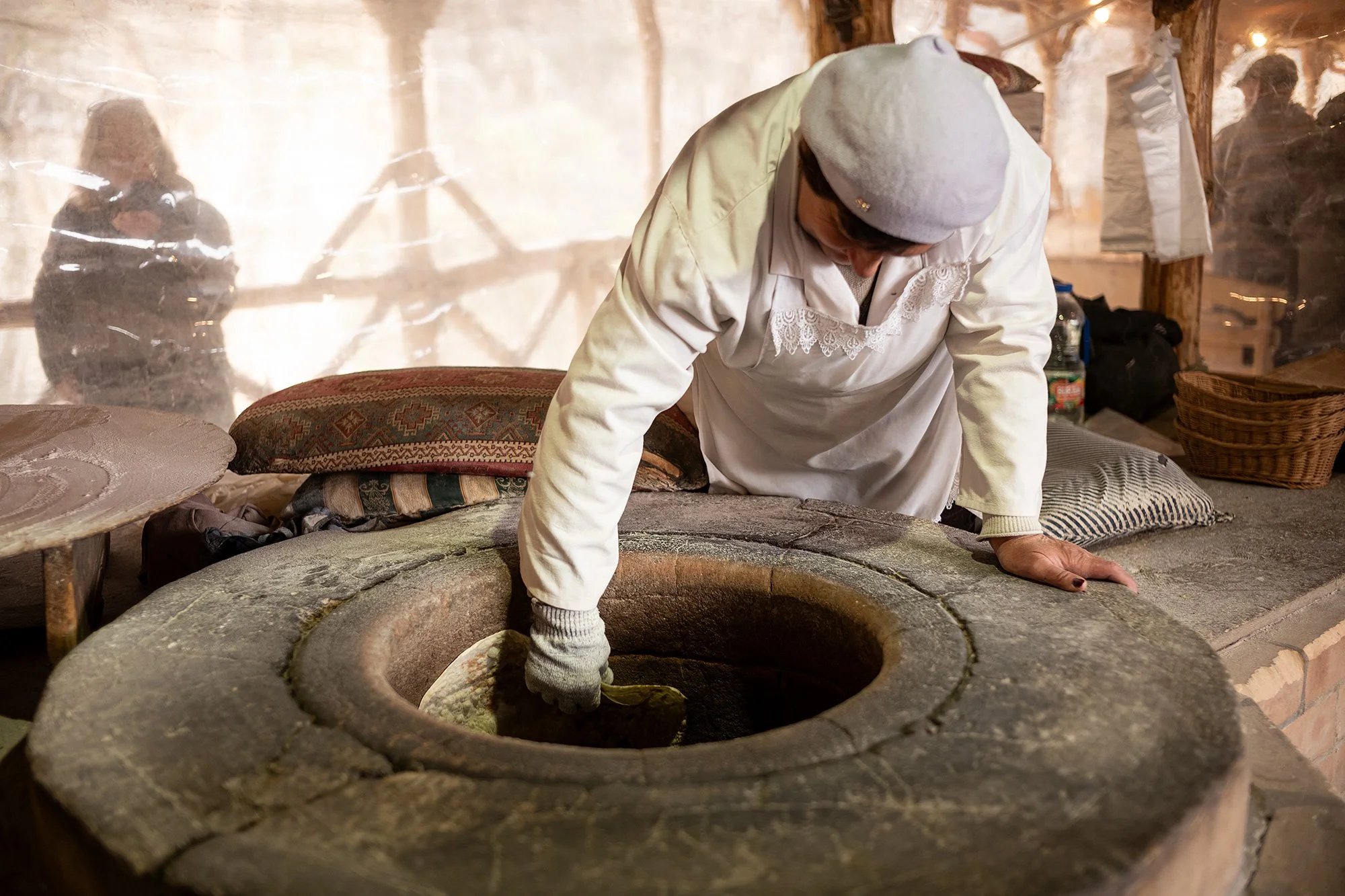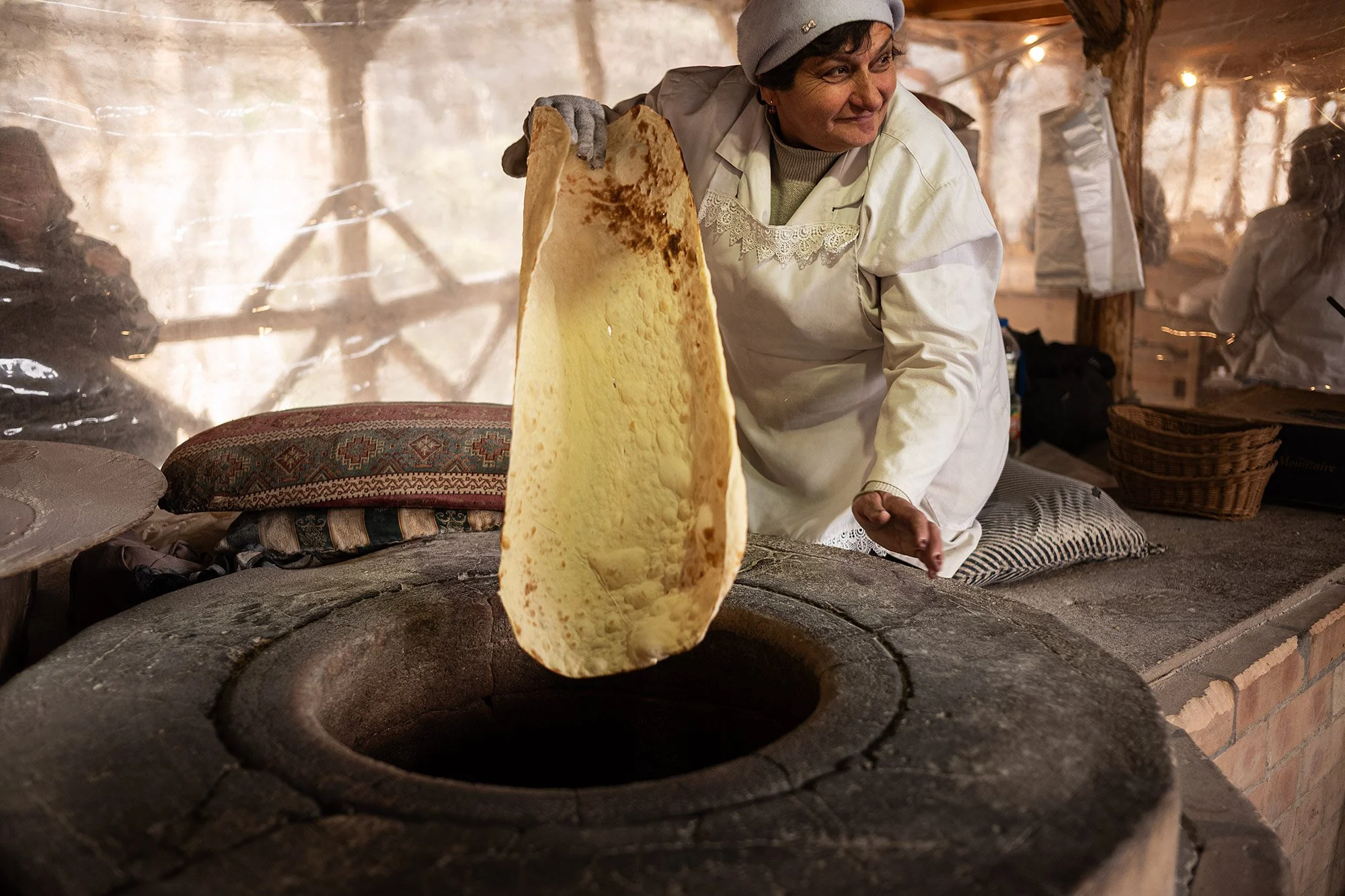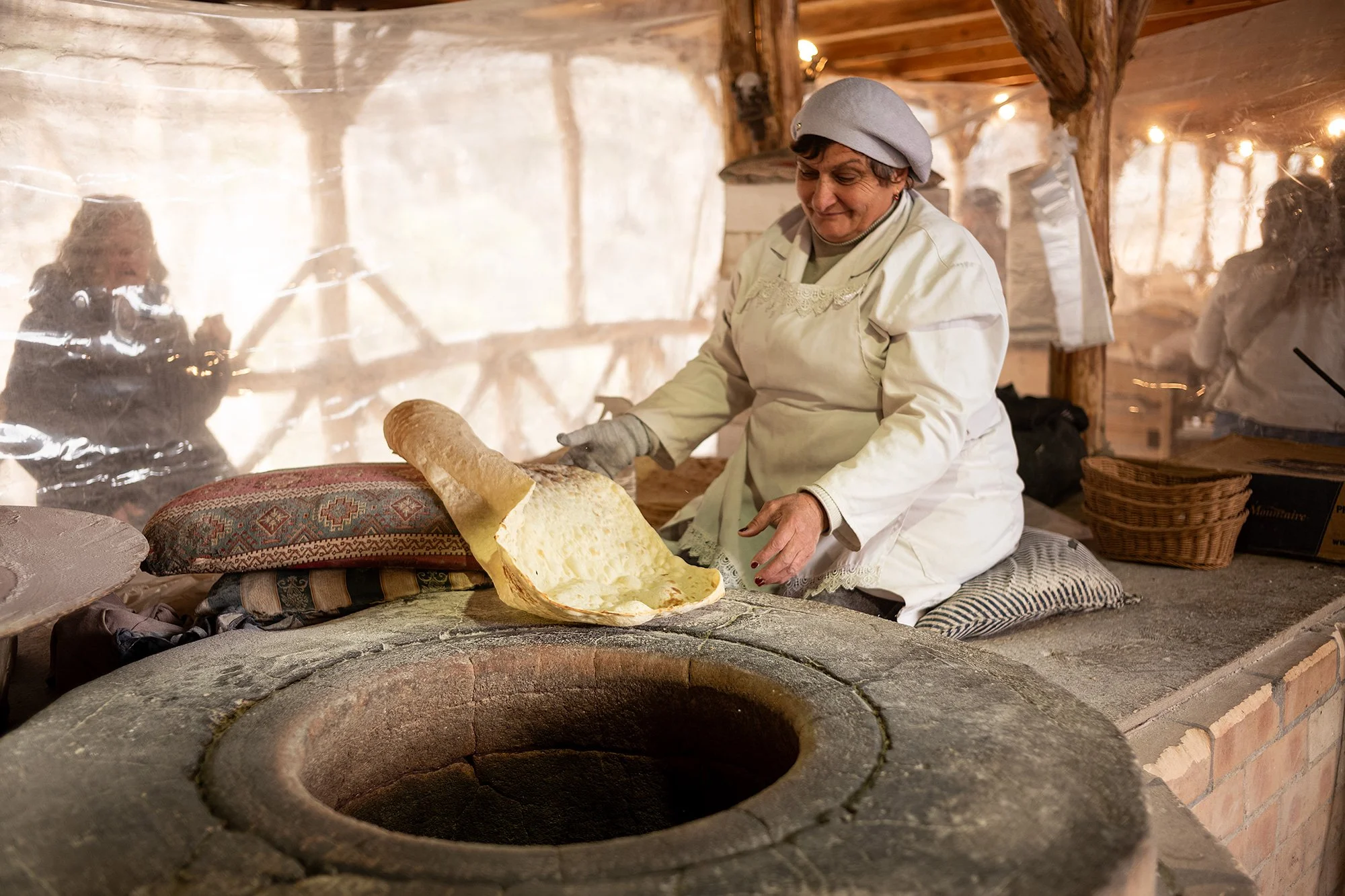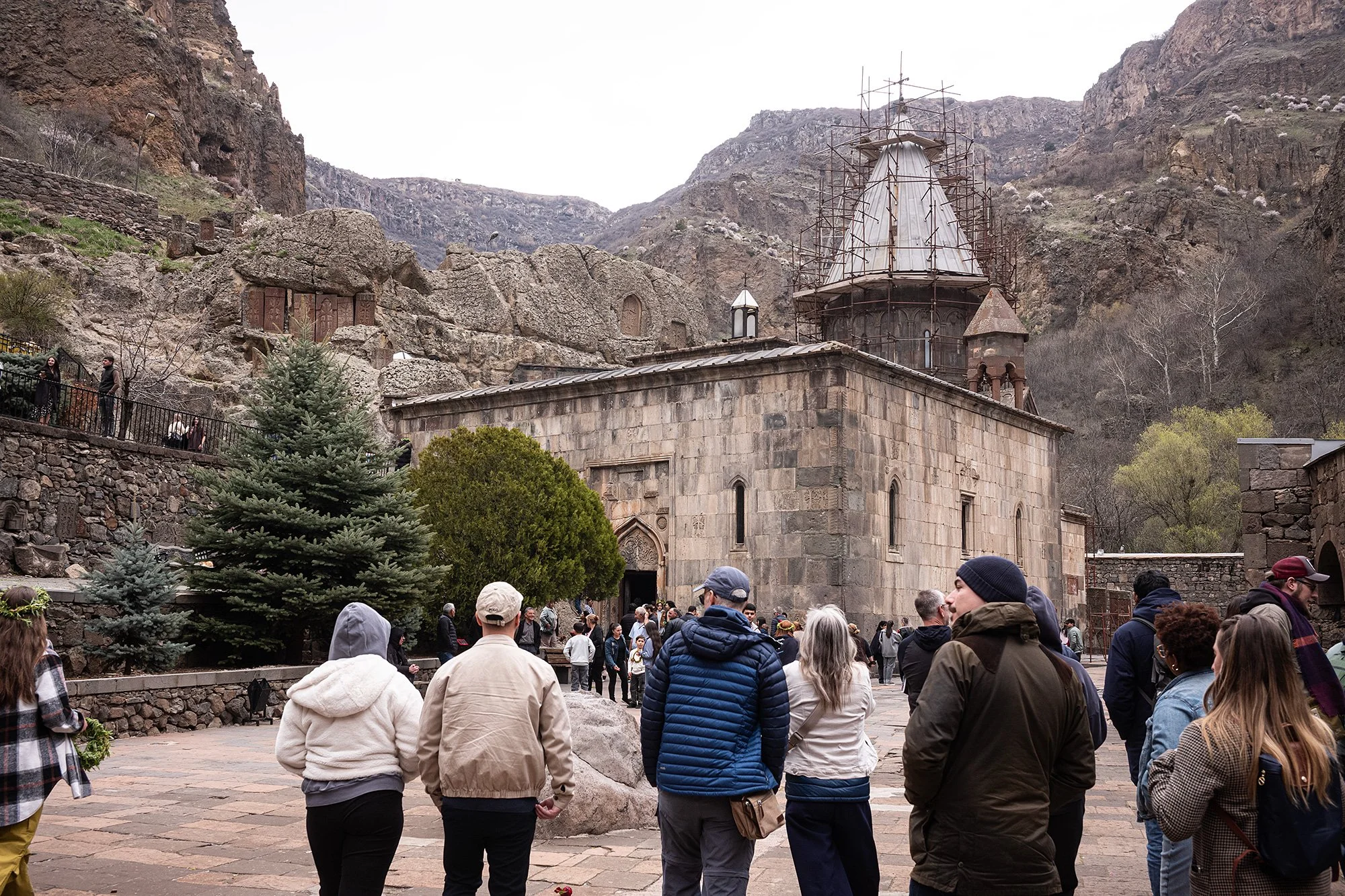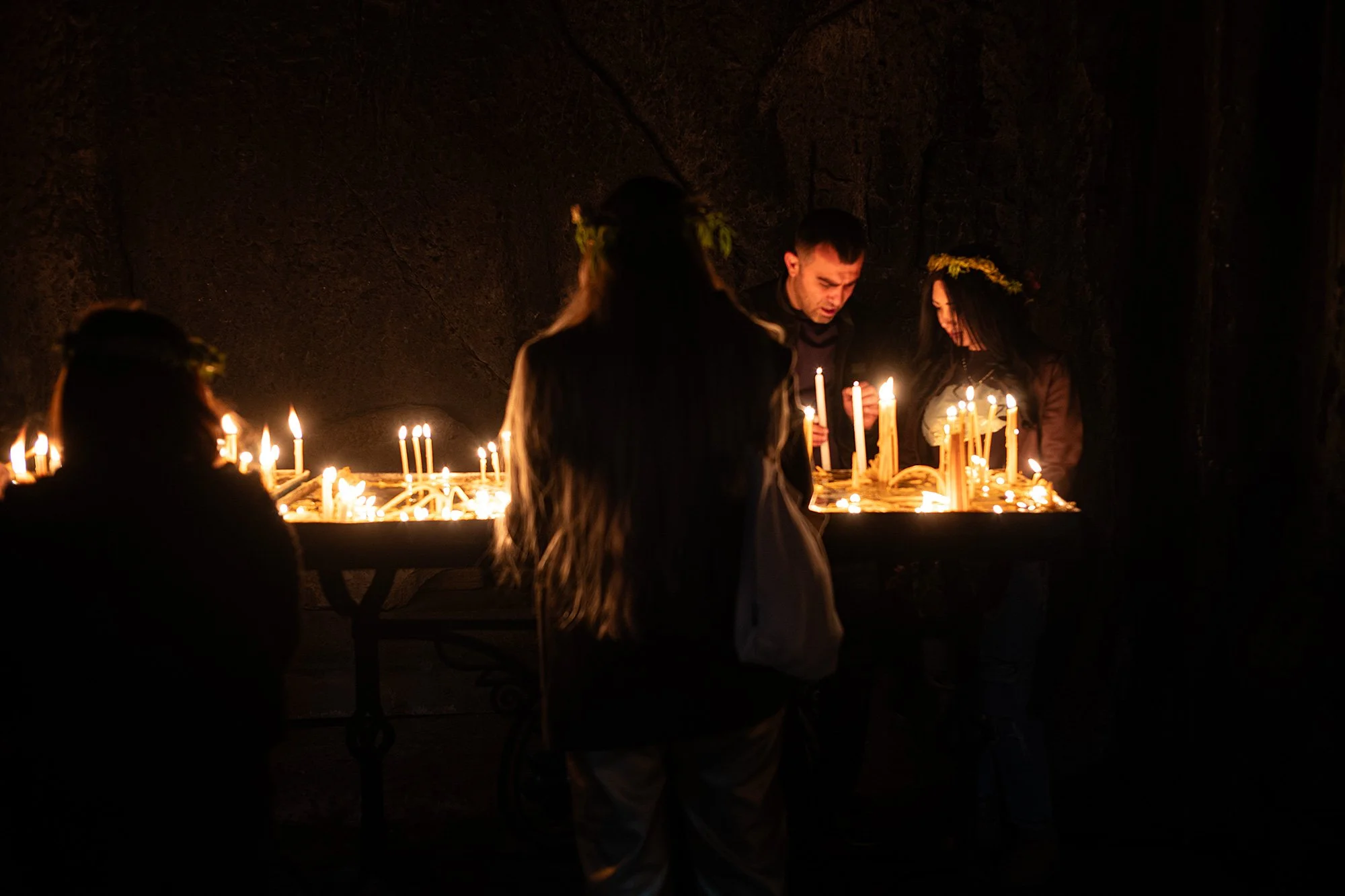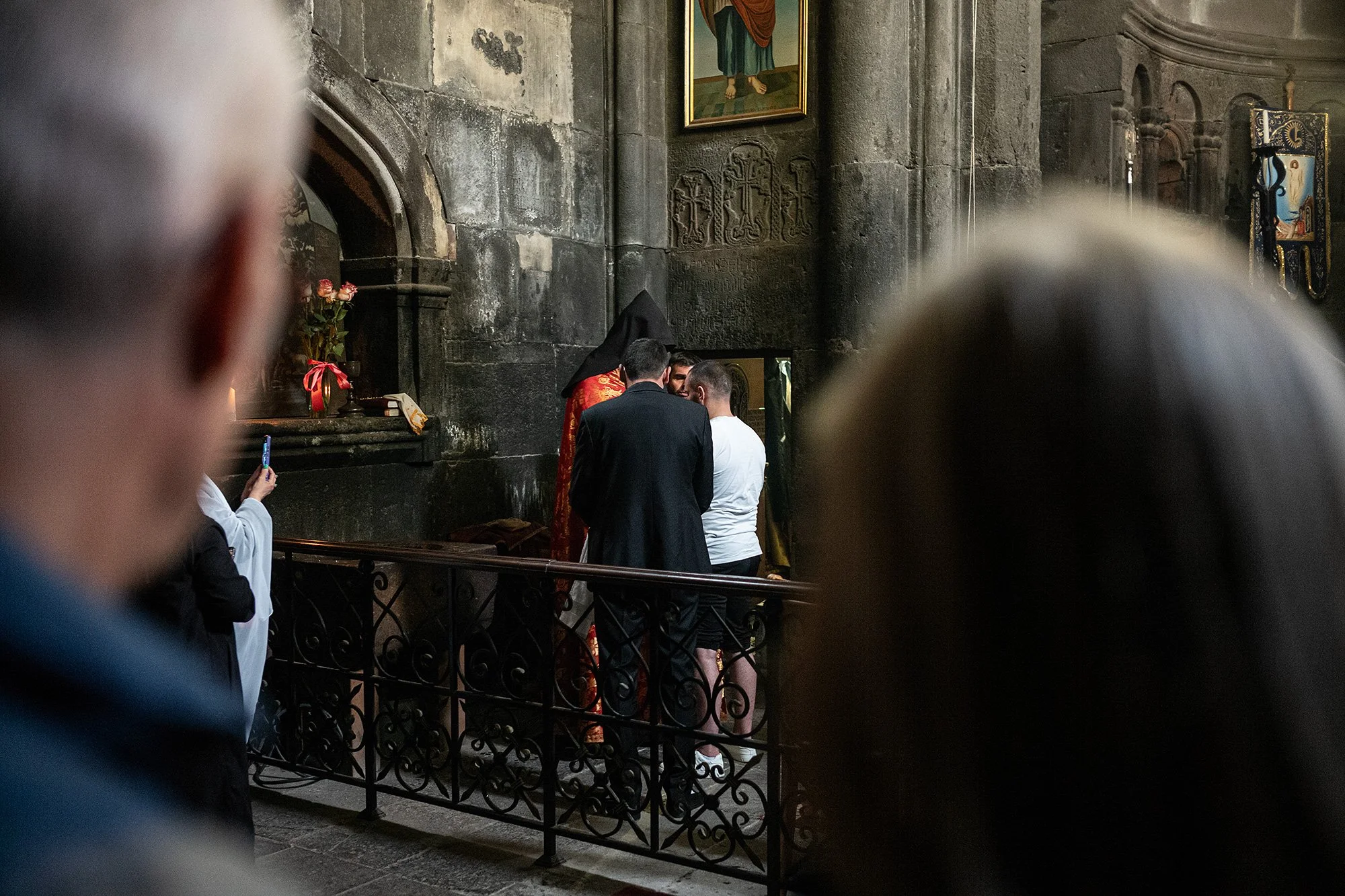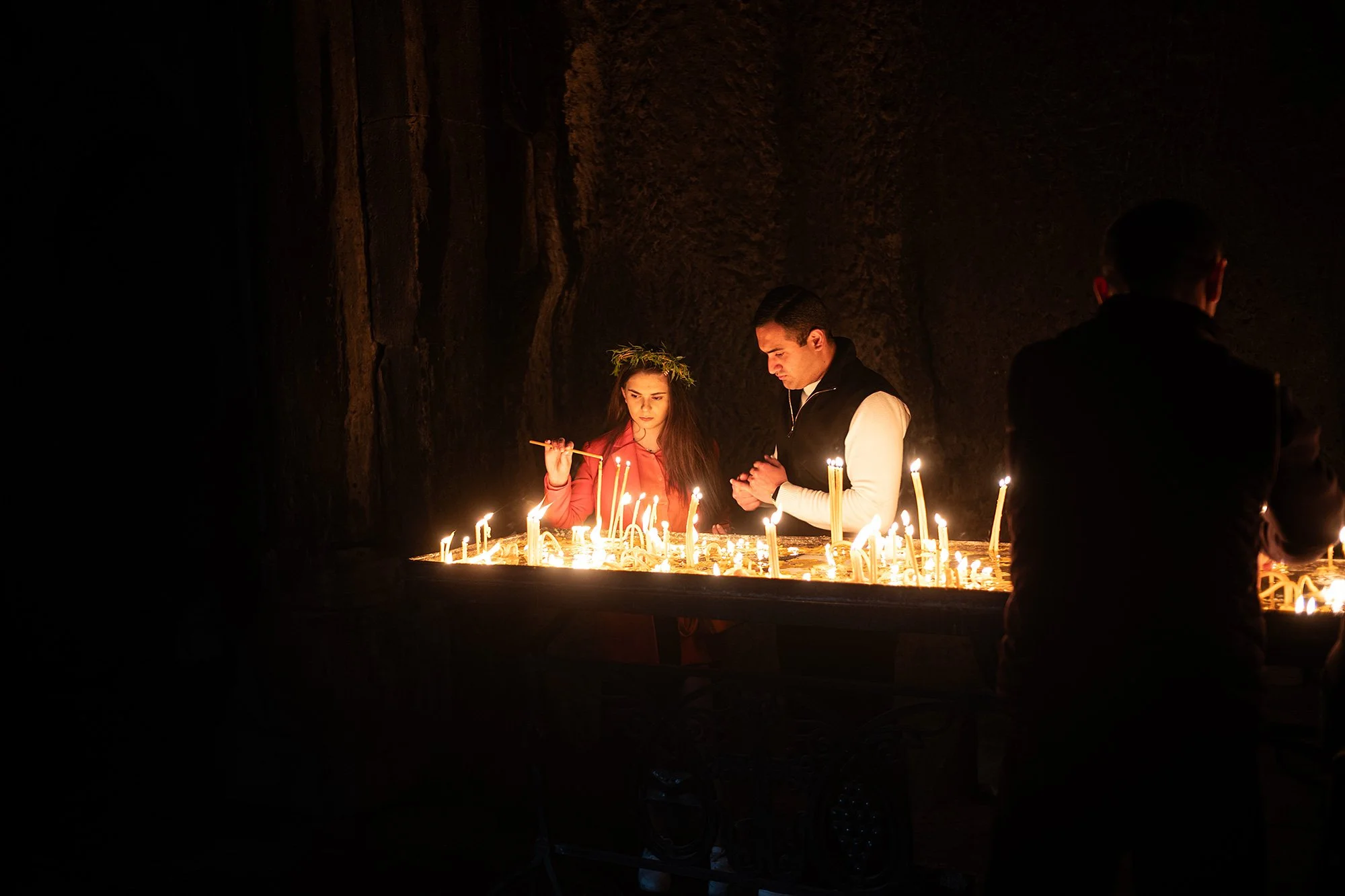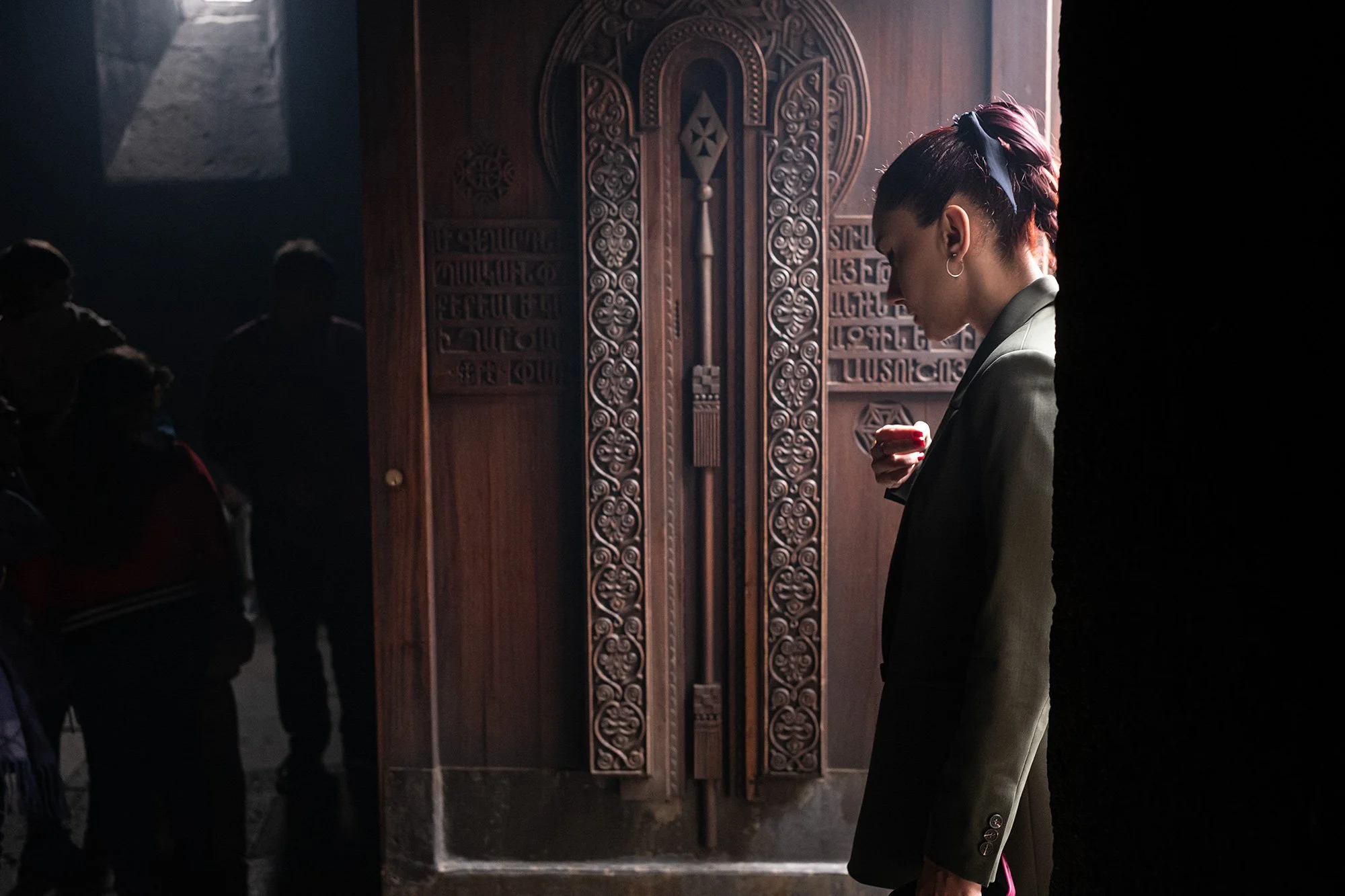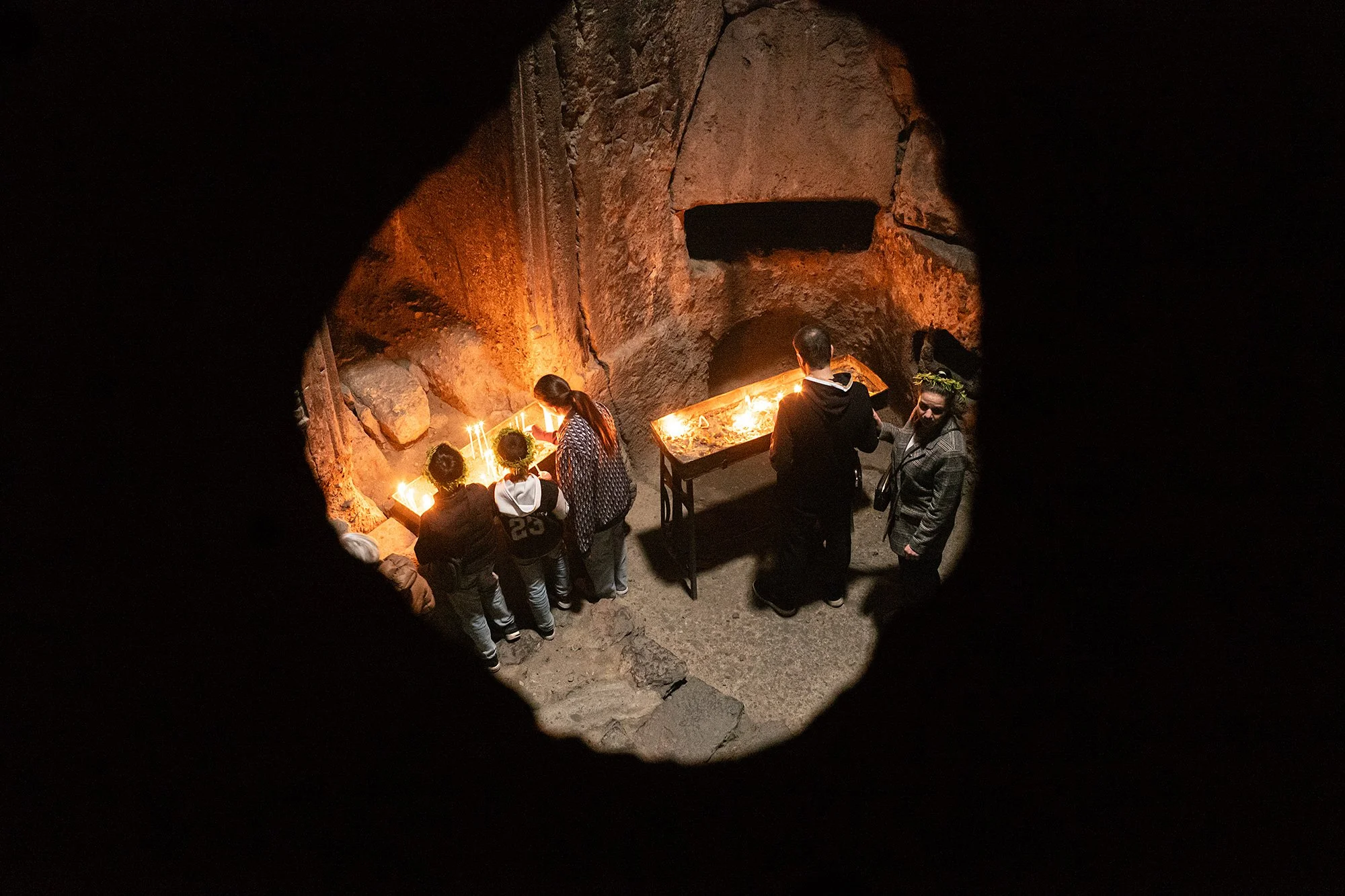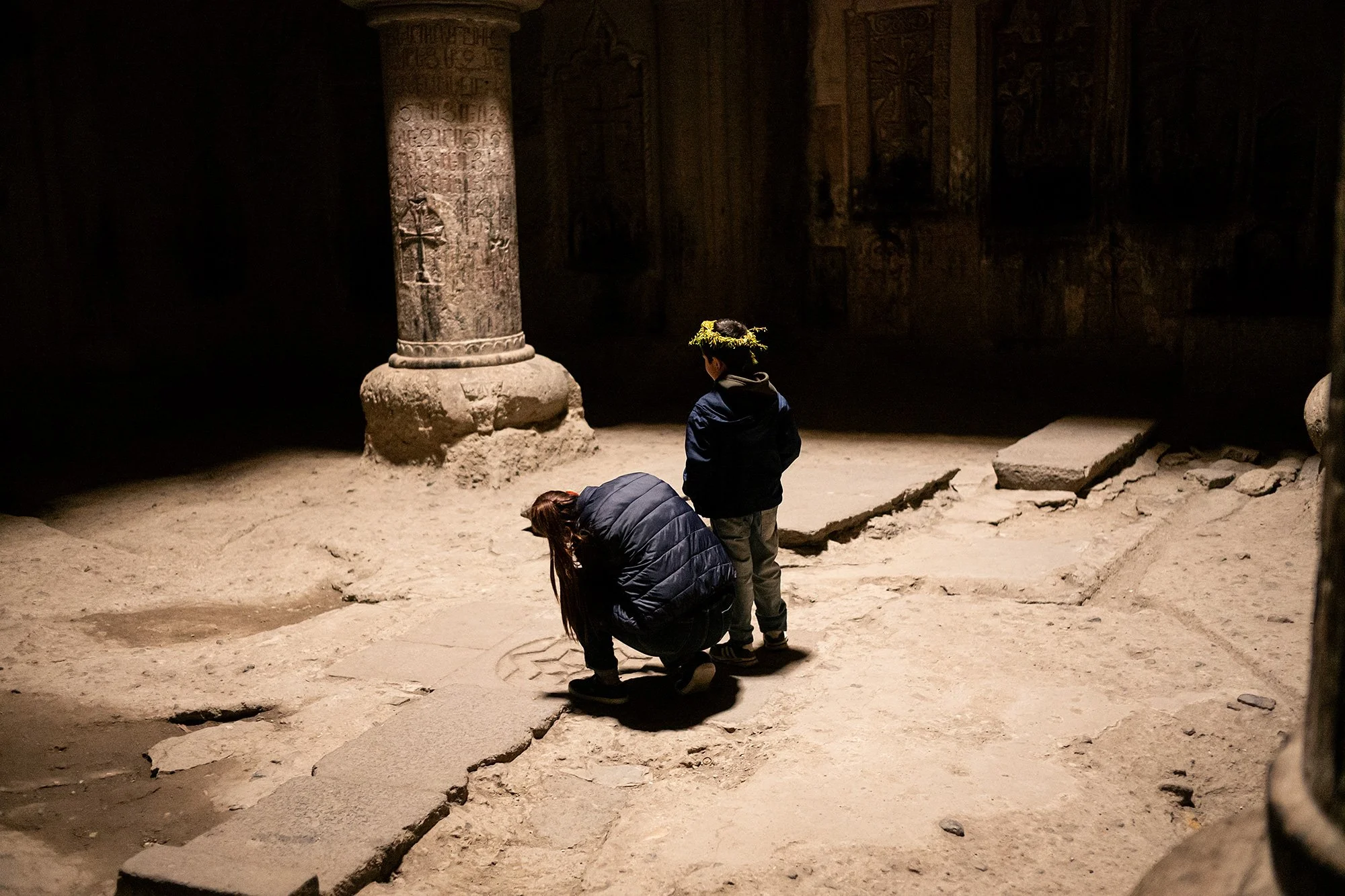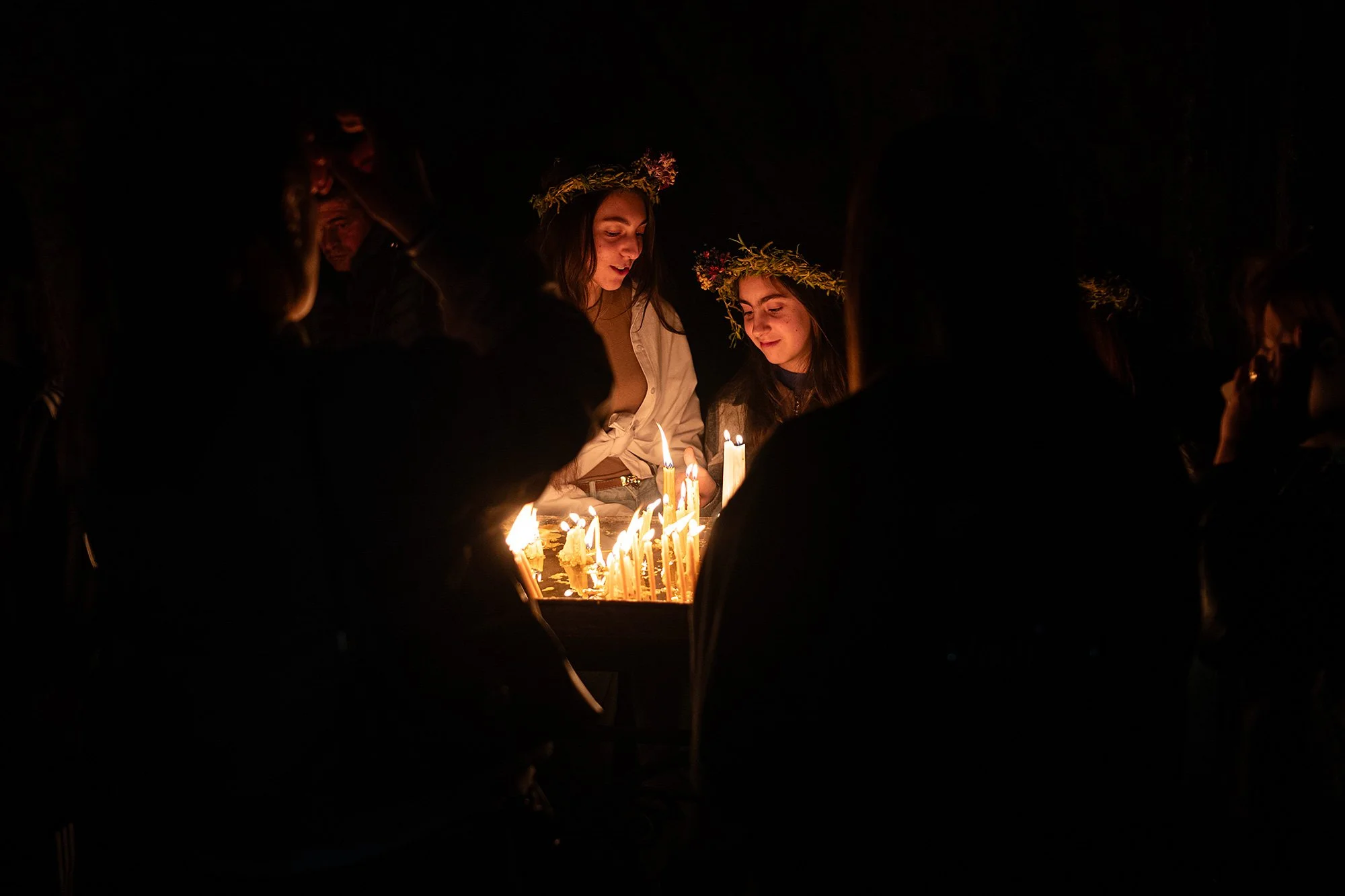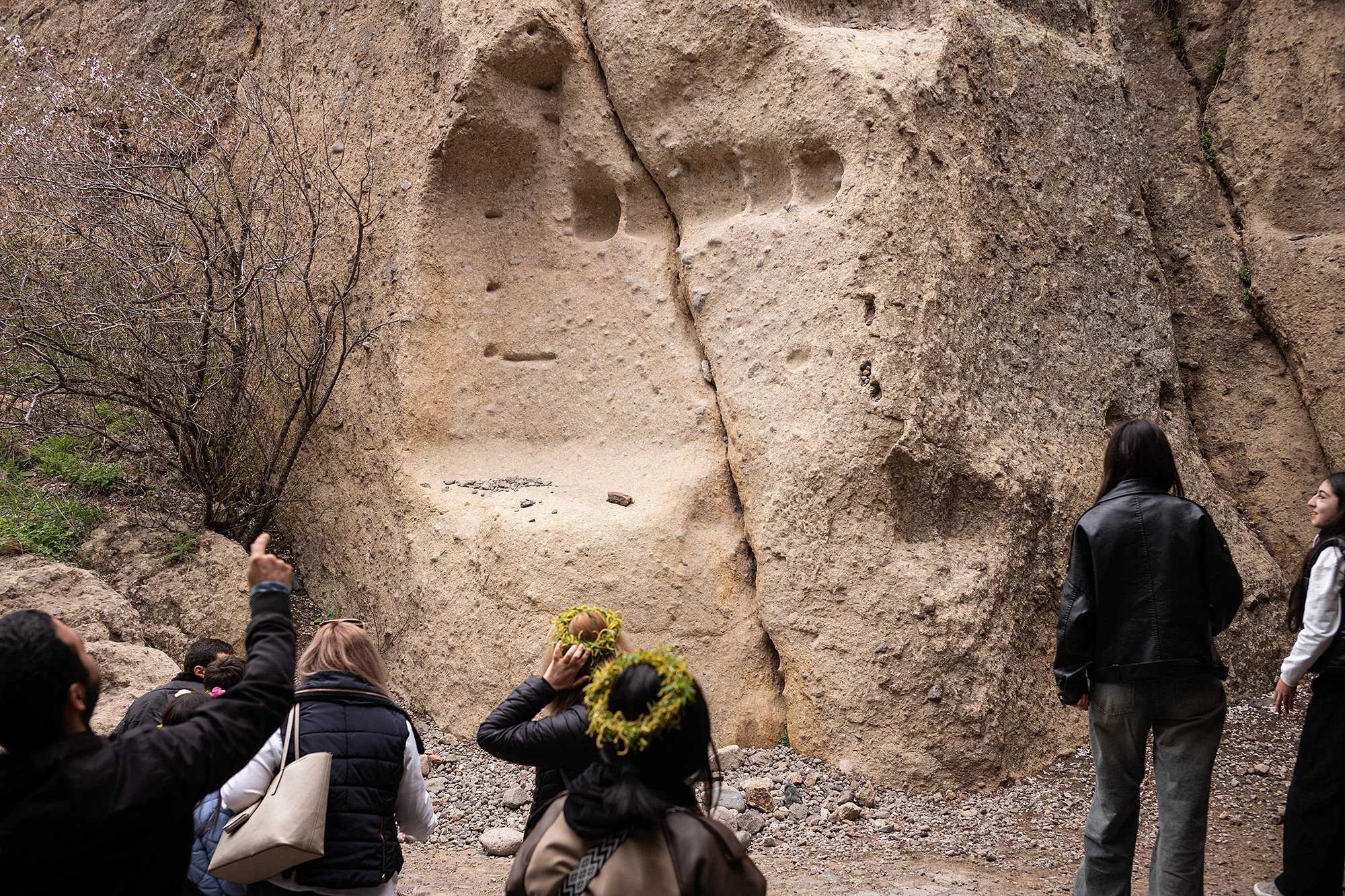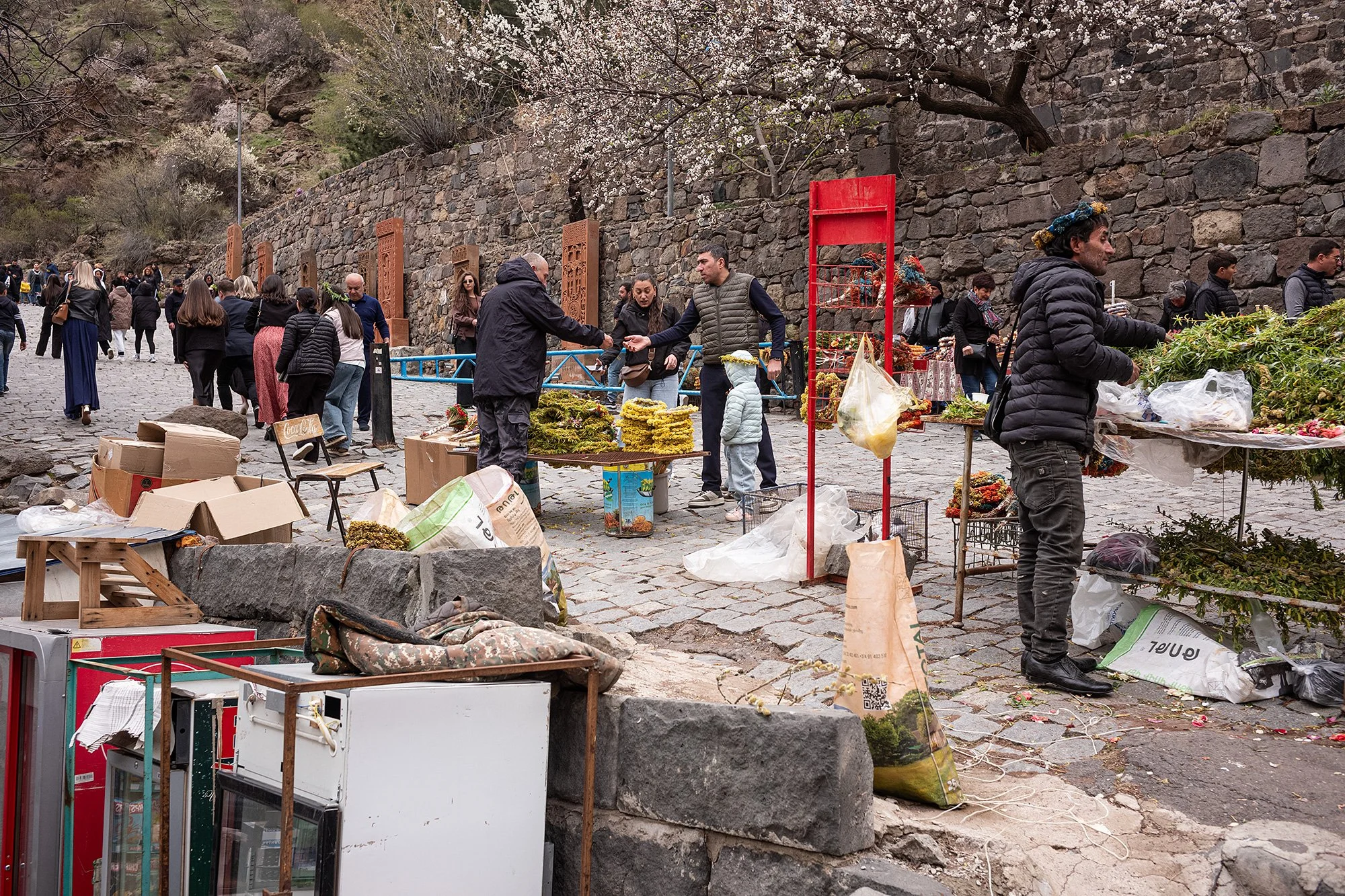A day trip to Garni, the Symphony of Stones, and the Geghard Monastery.
It’s another early morning as I gather myself for a second tour of Armenia.
With limited time in Armenia I feel the need to make the most of my weekend. And so I get up and shower and walk to the Alexander Tamanian Statue to meet my group for day.
Our first stop is Charent's Arch, dedicated to the Armenian poet Yeghishe Charents. Said to be one of his favorite spots, the arch has been erected where it is thought that he had been shot and buried. It overlooks a wide valley out to Mout Ararat, but today low clouds obscure the peak.
We continue on to Garni, site of a pagan temple built by King Tiridates I in the first century AD as a temple to the sun god Mihr. It’s been described as the “easternmost building of the Greco-Roman world” and is the only largely preserved Hellenistic building in the former Soviet Union.
There is some disagreement as to the nature of the building itself, some positing that it’s a tomb rather than a temple, basing their theory partially on the discovery of nearby graves, and a few marble pieces of the Asiatic sarcophagus style, arguing that there is no direct evidence linking the structure to Mithras. The temple moniker remains, however.
From the temple we can look across and into the valley where we can see basalt columns running along the Garni Gorge. This is the Symphony of Stones, and our next stop.
The van leaves us at the entrance to the gorge and our guide pays our admission, giving us less time than I would have liked to walk the length of the path.
I walk quickly to the end, to find a small train that offers rides back to the top and paths that continue on into the valley. I slow my pace and start walking back, taking more photos of the columns as I go.
I bump into Marriya on the way back and help her take photos for her Instagram account. She’s from Dubai but had been working in Perth at various mining facilities. She’s on her way back to Dubai for the time being and looking to sort out her next move.
From the base of the valley I can just make out the temple on a ridge and marvel at the formations around us. I had seen similar columns off the coast of Oban in Scotland in Fingal's Cave and more recently in Iceland, but they never cease to amaze.
We head back to the van, which takes us to a restaurant overlooking the gorge for lunch. Before being seated we stand and watch two women make flatbread in a large stone oven. One rolls out the dough, tossing it to another who places it on a pad, which she uses to transfer the bread to the oven, much like nan in a tandoor.
We’re split up for lunch into those who are eating a vegetarian meal and those who are eating meat. I’m seated with a couple traveling around the area and a father and son who’s son’s main concern is to visit as many countries as possible. They’re doing a series of whirlwind tours stopping for a day in various countries over the course of the next few months. They ask me how many countries I’ve been to and I demur; the number of countries I visit is far less important to me than the time I spend in them: the people I meet, the experiences I gain.
As I wait for people to finish paying for their meals I head outside once again to watch the bread being made. I ask the baker if I can buy a small loaf and she tells me I have to order inside. I race inside and pay for two small loaves, rushing out with the receipt. Even tho I run back to the van I’m the last one to arrive, the bread hot in my hands. I offer it around to my fellow passengers, steam rising from the pastic bag as I pass it around.
Our final stop is the Geghard Monastery, a complex of churches and tombs cut into rocks at the entrance to the Azat Valley. It’s Tsaghkazard (Palm Sunday) and the road leading up to the monastery is full of cars and people. The van lets us out and we follow the crowds towards the courtyard.
The guide gives us the history and background of the monastery before letting us explore on our own. I head first toe the main church (the "Kathoghlke"). Inside, people light candles. Off to the side there appears to be a baptism. All around me there are poeple filtering in and out of the church, around the various chambers.
The light spililng in from the courtyard beautifully illuminates the door to the church, and as I’m about to exit to visit more of the complex I can’t help but stand beside it to watch people step in and out of it. I love the flower crowns that adorn some of the visitors and I’m half tempted to buy one on the way out from one of the many vendors on the street leading to the Gavit.
I walk into the zhamatun and visit the chapel, climbing up to the upper zhamatun to admire the large rooms hewn from the rock. From a window in a corner of the chamber I can look down into the chapel at people lighting candles and praying before the altar.
A spring flows into the church from one part of the complex. It’s dark and people shine flashlights to get a better view and to find their footing as they approach and make ablutions. When there’s a break in the crowd I head to the spring myself and follow suit, dousing myself with the holy water.
Outside, I admire the doorways cut into the rock that lead to the various chambers before wandering back into the main church to soak up more of the atmosphere before it’s time to go.
It’s disappointing how limited our time is at the monastery. I run into Marriya and she concurs. We could spend the rest of the afternoon here further exploring the different rooms and chapels, watching the crowds come and go. I feel lucky to have come on this day of all days. It’s an awesome time to be visiting.
Leaving the complex I stop to watch as people attempt to toss small stones into holes carved into the rock. It’s said that if you manage to land your stone in the carved-out space your wish will come true. Unfortunately, there’s not enough time for us to attempt it.
Marriyam and I exchange numbers and make plans to meet up again in Yerevan. I’m in town for another week and she’ll be around for a few more days. There’s a coffee shop near a candy store she suggests we try and a wine bar call In Vino, which is a place that has been on my list. I’m happy to have met her and look forward to experiencing more of Yerevan with a new friend. 🇦🇲











